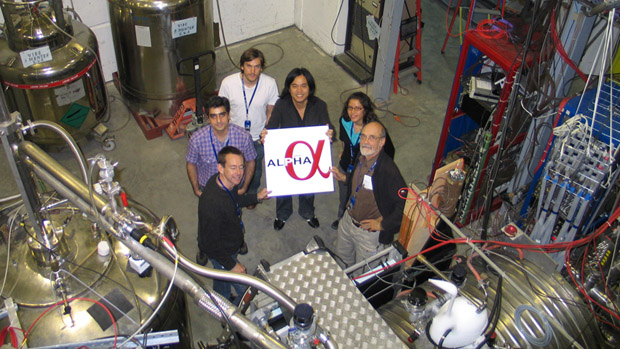How long can you hold your antimatter?
1000 seconds answers the alpha team ( including a number of Canadian researchers) in an article published in Nature Physics.
ALPHA is an international collaboration (including UBC's Walter Hardy and Andrea Gutierrez ) based at CERN, and whose aim is stable trapping of antihydrogen atoms, the antimatter counterpart of the simplest atom, hydrogen. Now that they can create & hold antihydrogen for appreciable durations, they now conduct basic experiments on these atoms.
Do matter and antimatter obey the same laws of physics? One intriguing way to test this would be to compare the spectra of hydrogen and its antimatter twin: antihydrogen. For example, the frequency of the 1s2s transition in hydrogen has been measured with some precision (about 2 parts in 1014). The CPT theorem requires that this frequency must be exactly the same in antihydrogen. A goal of the ALPHA experiment is to test this claim.
"I've always liked hydrogen atoms," said Walter Hardy, a leading expert in atomic hydrogen studies. "It's ironic that we are now trying to measure the same properties of antihydrogen that I measured many years ago on regular hydrogen. It is a crucial comparison, though, and will tell us if we truly understand the relationship between matter and antimatter.
Note that a photo of Andrea Gutierrez graces the front page of the CERN webpage.
See also the Press release from TRIUMF.
